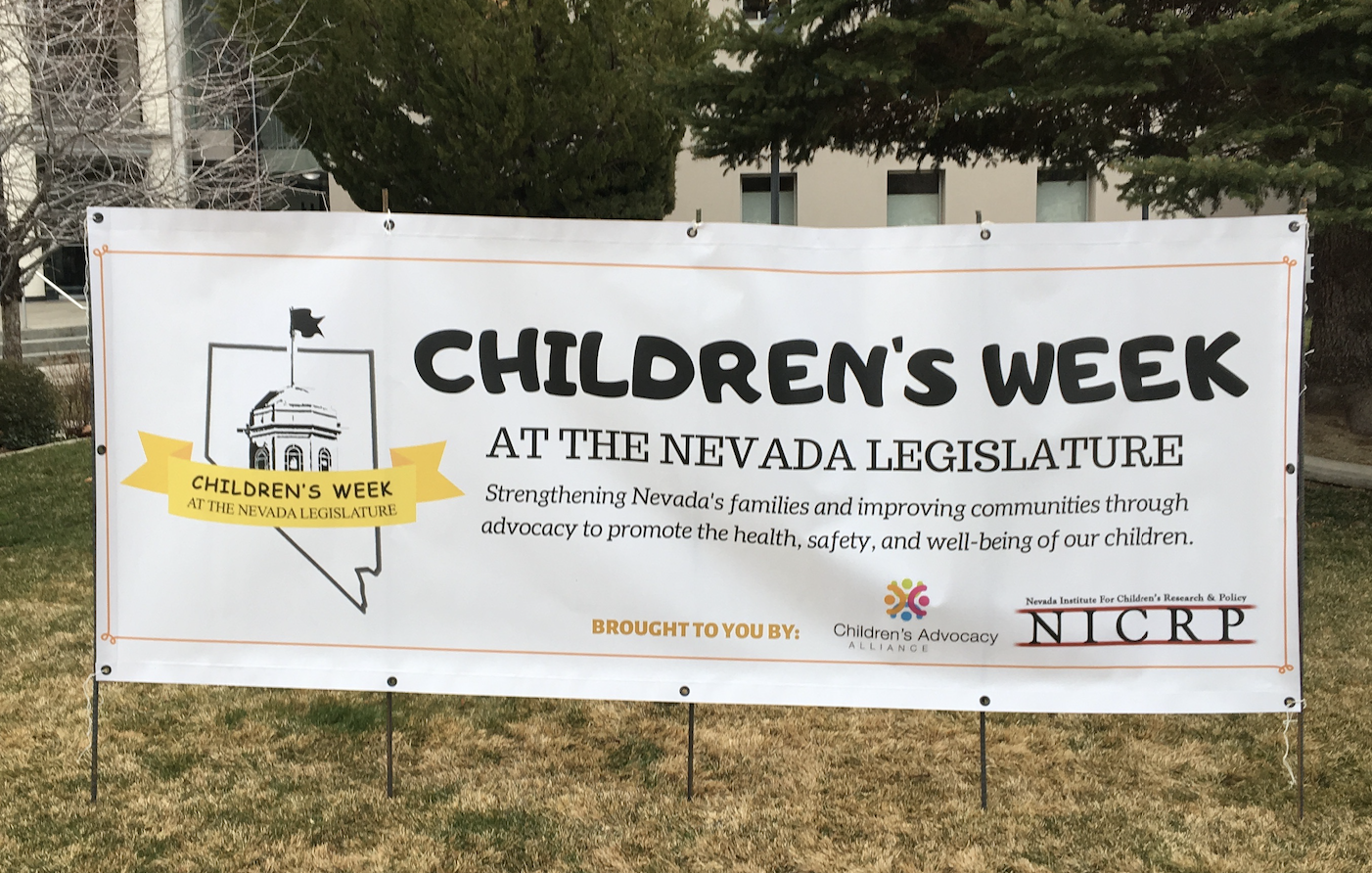 Return to Articles
Return to Articles
3.18.2024
Overview of the Nevada Legislative Process

To understand how programs and services come into existence and are funded, it is important to learn about the Nevada legislative process.
Although rules and policies that impact early childhood are made at the local, state and federal levels, many of the key decisions about Nevada’s early childhood programs and services happen at the Nevada Legislature.
5 Key Facts about the Nevada Legislature
- The Nevada Legislature is made up of two “houses” – the Senate and the Assembly. Legislators are elected as either Senators or Assemblymen/Assemblywomen.
- There are a total of 63 members of the Legislature – 21 in the Senate and 42 in the Assembly.
- Assembly members are elected to two-year terms and Senators are elected to four-year terms. Legislators are limited to serve no more than 12 years in each house or 24 years in total.
- The Nevada Legislature meets in Carson City on a “biennial” schedule, meaning the official legislative session only happens once every two years. These sessions are limited to 120 days, but can be extended if the Governor calls for “Special Session.”
- A “legislative session” is the period during which the Legislature meets. Regular sessions of the Legislature are held in odd-numbered years and begin on the first Monday in February. Nevada is one of only four states that has a “biennial” session.
- Legislators hold meetings in between sessions through “interim subcommittees” to help make decisions, but can only pass new laws during an official session. However, many of the laws that are introduced during a legislative session are developed during these “interim” periods.
- Legislators consider approximately 1,000 bills and resolutions every session. Not all of these bills will become law.
5 Steps on How a Bill Becomes a Law
[from the “Guide to the Nevada Legislature 2023-2024”]
- Initial Steps by the Author – Idea and DraftingIdeas for legislation (laws) come from state and local government, elected officials, businesses, organizations, and citizens. Requests for drafting may be made by Legislators, legislative committees, the Governor, constitutional officers, the Nevada Supreme Court, state agencies, local governments, and certain other entities named in statute or legislation. A staff attorney for the Legislature prepares a formal draft of a bill.
- Action in the House of Origin
-
- Introduction and First Reading - A bill is submitted for introduction by a Legislator or committee chair. It is then numbered, read for the first time in the legislative House of origin, referred to committee, printed, and delivered to the committee.
- Committee Action and Report - A committee holds a hearing to take testimony and gather information about the bill. A committee may then make a variety of recommendations to the entire legislative body. It may recommend that the House pass a bill as it is written or pass it with amendments. If a committee decides that a bill requires further committee consideration, it may recommend to rerefer it to another committee with or without amendments. Finally, a committee may vote to indefinitely postpone consideration of a bill, effectively killing it, or may take no action at all.
- Second Reading Before the Full House - A bill given a “Do Pass” recommendation is read a second time and placed on General File for debate and a final vote. A bill given an “Amend and Do Pass” recommendation is read a second time, and if the amendment is adopted upon Second Reading, the bill is reprinted before being placed on General File for action.
- Floor Debate and Vote by the Full House - A bill is read a third time and debated. A roll call vote follows. Passage of most measures requires 11 votes in the Senate and 22 in the Assembly. Bills with tax or fee increases require a two-thirds majority (14 votes in the Senate and 28 votes in the Assembly). A measure that does not receive at least the required number of votes is defeated. After the vote, a Legislator may make a motion to reconsider the action, according to rules adopted by each House. All bills that are passed by the first legislative House are forwarded to the second House for consideration.
-
- Action in the Second House
The method of processing a bill in the second House is nearly identical to that in the first House. If a bill passes in the second House without amendment, it is enrolled and sent to the Governor. (Resolutions are sent to the Secretary of State.) If the second House amends a measure, it is returned to the House of origin for consideration of the amendment. - Resolution of Differences, If Necessary
-
- Consideration of Amendments - The House of origin decides whether to accept the second House’s amendment. If it concurs with the amendment, the bill is enrolled and sent to the Governor. If the amendment is rejected, the bill is returned to the second House for a decision on whether to withdraw the proposed changes.
- Conference Committee - If the second House does not withdraw its proposed changes, the bill is referred to a conference committee that includes members of both Houses. The conference committee attempts to resolve the differences and presents its recommendation in the form of a conference report. If both Houses adopt the report, the bill is enrolled and sent to the Governor. The bill fails if the members of the conference committee do not reach agreement or if a conference report is not adopted by both houses.
5. Role of the Governor
The Governor must act on a bill within five days after receiving it (Sundays excepted) if the Legislature is still in session, or within ten days if there are fewer than five days remaining in the session, or the session has ended (Sundays excepted). The Governor may sign the bill into law, allow it to become law without a signature, or veto it. A vetoed bill is returned to the House of origin to consider overriding the veto. An override requires a two-thirds majority of each House. If the Governor vetoes a bill after the session ends, the bill returns to the next regular legislative session. Measures become effective on October 1 following the end of the session, unless otherwise specified in the bill.
For more information on the Nevada Legislature, visit www.leg.state.nv.us or visit our Get Involved page for additional information and resources.






